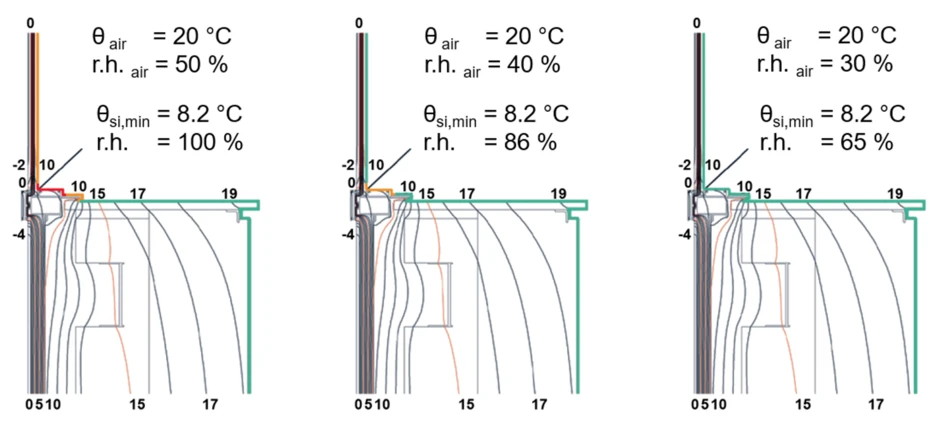Thermal and Moisture Protection
Climate- and culture-oriented construction in building physics
In addition to essential building requirements such as structural stability, further necessities arise for the usability of buildings. Excessive heat loss in winter and excessively high indoor temperatures in summer must be avoided. At the same time, potential moisture-related damage must be prevented. Ultimately, comfortable and hygienically acceptable indoor conditions are expected throughout the entire year, and these are closely linked to the above factors. The associated significant economic and climate policy goals can be achieved if the energy consumption of buildings is minimized and as few construction defects requiring costly repairs as possible occur. A comfortable indoor climate also forms the foundation for appropriate conditions of use.
For our temperate climate with cold winters, thermal and moisture protection are usually examined together, as they are directly interconnected. On cool interior surfaces, inadequate thermal insulation of individual components can lead to moisture accumulation, which in turn can cause mold growth or even condensation. Assessments of this are dependent on actual indoor humidity levels, which in residential buildings—such as in bathrooms or kitchens—can be significantly higher than the normative values of 20 °C and 50% relative humidity. Conversely, the indoor humidity can be significantly lower, for example, in office buildings with hardly any moisture sources, where levels as low as 30% relative humidity can be measured (see Fig. 1).
See project HochhausBestand:
https://www.zukunftbau.de/projekte/forschungsfoerderung/1008187-2027
and
https://www.detail.de/de_de/hochhausbestand
Over the past decades, winter thermal insulation has gradually been adapted to the requirements of the European Performance of Buildings Directive. This has been achieved by minimizing transmission heat losses (HT) and ventilation heat losses (HV). However, in terms of economically efficient application of the Pareto principle, this adaptation often leads to the need for complex and costly constructions and technical systems for heating and ventilation. From an economic perspective, the optimum rather seems to lie in simpler constructions and in buildings that require as little building services technology as possible (see Fig. 2). Systematic deviations—such as those caused by prebound and rebound effects—combined with statistical fluctuations, result in further tightening of energy performance requirements having little to no significant impact. On the contrary, they hinder cost-effective and simple building approaches that are already sufficiently energy-efficient.
This becomes particularly evident in summer thermal protection, where simple measures such as night-time window ventilation combined with the activation of thermal mass offer cost-effective solutions. Here, too, economically meaningful goals are best achieved by minimizing the use of technical systems in buildings. Related studies, conducted using dynamic thermal simulation methods, confirm these findings.
See project The Future of High-Density Building Methods:
https://www.bbsr.bund.de/BBSR/DE/veroeffentlichungen/bbsr-online/2024/bbsr-online-82-2024.html

